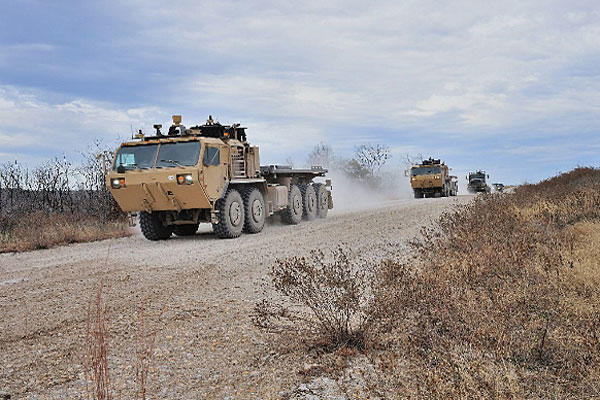The U.S. Army's top logistics officials said Tuesday the service wants to take soldiers out of the driver seats of future ground convoys to cut down on casualties.
In fact, tactical-wheeled vehicle officials say that autonomous ground mobility technology is their top science and technology priority.
Earlier this year, officials from Army Tank-Automotive Research, Development and Engineering Center, or TARDEC, and Lockheed Martin completed a successful demonstration that showed fully autonomous convoys operating in urban environments using multiple vehicle types.
Driverless M915 tactical trucks and the Palletized Loading System vehicles navigated hazards and obstacles such as road intersections, oncoming traffic, stalled and passing vehicles, pedestrians and traffic circles in both urban and rural test areas.
"There is a lot of potential there," William Moore, deputy to the commanding general of the Army's Sustainment Center for Excellence, told an audience at the 2014 Tactical Wheeled Vehicle Conference. "That is probably our number one low-hanging fruit."
Army officials are conducting a Joint Capabilities Technology Demonstration to develop investment options.
"We will be briefing the [Army's senior leadership] over the next two weeks on where we stand," Moore said.
The effort is an attempt to expand on the experience combat units have gained using small unmanned ground vehicles to search enemy caves and suspected enemy bombs.
But instead of tiny, backpack bots, Army officials envision convoys of driverless resupply vehicles doing the heavy lifting on the battlefield of the future.
"It's a technology we are very excited about," said Brig. Gen. John Sullivan, chief of transportation at the Army's Transportation School. "Leader-follower technology is probably the area where we expect to see the most gains in the short term."
Ultimately, the Army wants to develop fully-autonomous ground convoys, but that is more of a long-term effort, Army officials maintain. With leader-follower technology, "you still have manpower driving the trucks; it just reduces the numbers, so maybe it's one of every three vehicles actually has a driver in it," Sullivan said.
Tactical-wheeled vehicle officials are also pursuing other technologies such as autonomous air resupply, advanced power generation, and 3-D printing technology for manufacturing repair parts close to forward positions.
"This is where we think we need to be over the next few years; what we are trying to do is give [leaders] options on how to invest on the S&T side," Moore said.
Check out Military.com's Equipment Guide to learn more about Army vehicles.
-- Matthew Cox can be reached at Matthew.Cox@monster.com.





























